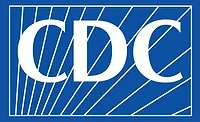The Tragedy of Foodborne Illness: Much Is Preventable
There is an incredible opportunity to make a difference in food safety and food handling.
The U.S. Centers for Disease Control and Prevention (CDC)[1] report that over 3000 people die each year in the U.S. from foodborne illness. That is an average of eight people per day. An estimated 128,000 people are hospitalized each year. That is an average of 350 people per day.
From my perspective as a physician, making a difference with respect to foodborne illness outbreaks begins with increasing awareness and acceptance of contributing factors, and demands a commitment to following best practices in food handling and preparation.
Unfortunately, many restaurant food handlers are not following best food safety practices. As a result, according to CDC 48% of food borne illness is traced to restaurants.[2] We need more awareness, compliance with existing safety codes, education and supervision within the food industry that trickles down to the food handler or server. It will make a difference.
In this first of three articles, we will put a face on the social and human side of foodborne illness.
There are social implications of foodborne illness for a restaurant that impact on restaurant survival. In the 1993 Jack in the Box foodborne illness epidemic, insurers paid out over $98 million. The largest payout was $15.6 million for one case. While this is not the average, it shows how devastating the financial loss can be for a restaurant. Every year, there are several class action complaints filed. While each complaint may vary, it is often alleged that: The restaurant had a duty to comply with all … safety codes … had a duty to properly supervise, train, and monitor its employees, … had a duty to use ingredients…that were safe, … clean, free from adulteration, but failed to do so and was therefore negligent.
Unfortunately, the reputations of good restaurants can be ruined.
Effects of Foodborne Illness
Experts estimate that the cost to the United States in medical bills, lost work productivity and illness related mortality from food borne illness is $77 billion per year. That’s a number that is so big we need to put it into perspective. It is $248 for every man, woman and child in the U.S. The cost of foodborne illness approximates the cost of influenza epidemics.[3]
It is hard to appreciate the human suffering and loss of productivity. Numbers are sterile. Comparisons and real life stories reveal the suffering and pain.
As an emergency physician for nearly 30 years, I’ve treated cases of foodborne illness, from one who died from Campylobacter, which is most commonly found in raw poultry, fresh produce or unpasteurized milk, to others with hepatitis, most frequently associated with raw shellfish, cold cuts, unpasteurized milk and poorly washed fruits or vegetables.
Foodborne illness affects young and old, rich and poor. It changes peoples’ lives forever. It is not fair. Tragically, 48% of the time, it is traced to restaurants.[2]
The public deserves better food handling and cleaner restaurants. As food safety and food handler professionals, we are in a position to make a difference.
Following simple proven food safety rules and U.S. Food and Drug Administration (FDA) food codes can prevent many epidemics:
• Food handlers should not work if they are sick. When working they need to diligently wash their hands and use gloves when handling ready to eat foods.
• Vegetables and fruits must be thoroughly washed.
• Red meats, poultry and fish must be cooked properly.
• Time & temperature abuse rules must be carefully followed.
As part of the progress made in this area, FDA has released video testimonials to enhance retail food safety. Less than 10 minutes each, the videos educate retail and foodservice employees on the possible, dire consequences of poor preparation practices and provide tips to prevent foodborne illness.
Two of the videos feature the testimonials of family members who lost their mother and wife after she ate Salmonella-contaminated food from a restaurant. A third video tells the story of a woman who contracted listeriosis while pregnant and nearly lost her newborn daughter to the disease.
The videos support the FDA’s Retail Food Safety Initiative, which seeks to strengthen the retail and foodservice industry’s active managerial control of foodborne illness risk factors. The videos were produced as part of FDA’s Oral Culture Learner Project, designed to enhance food safety training efforts at the retail level by helping food employees understand the important role they play in protecting public health. In addition to the video testimonials, this project has produced numerous food safety posters and storyboards in nine different languages: English, Spanish, Simplified Chinese, Traditional Chinese, Vietnamese, Russian, Korean, Hindi, and Arabic.
The agency encourages industry operators, food safety educators/trainers, and federal, state, local, tribal, and territorial regulatory officials to take full advantage of the project materials, which are available free of charge at www.fda.gov/foodemployeetraining.
Finally, as food safety professionals and handlers, we all need to care. We need to care about the awesome responsibility we have when we serve other people food. Improperly handled food can cause contamination of that food, potentially leading to devastating cases of foodborne illness and death.
Dr. Harlan Stueven was an emergency physician and poisoning specialist for nearly 30 years. He is Founder and President of DiningGrades.com.
References
1. www.cdc.gov/features/dsfoodborneestimates/.
2. www.cdc.gov/mmwr/preview/mmwrhtml/mm6203a1.htm?s_cid=mm6203a1_e.
3. www.who.int/mediacentre/factsheets/2003/fs211/en/.
Looking for quick answers on food safety topics?
Try Ask FSM, our new smart AI search tool.
Ask FSM →








